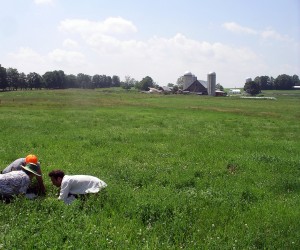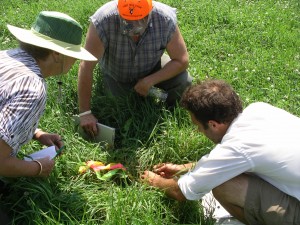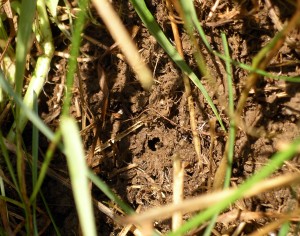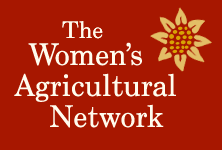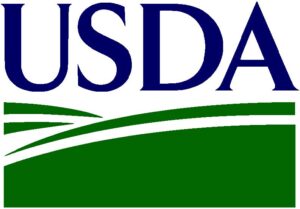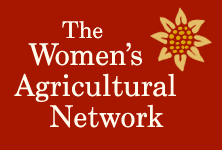As a regional coordinator for a NESARE-funded regional comprehensive grazing course as well as a fellow trainee, the simple act of throwing some darts has had a profound effect on me and the way that I look at pasture. For years, I have visited farms and looked at the plants growing there. Sure, I’ve noticed areas of erosion (or lack of it). I’ve checked out the fencing infrastructure and the water sources. I’ve stepped over manure patties. In short, I’ve skimmed the highlights. We all do it.
Admit it…you may have done this yourself. You’ve got a meeting or other animals to care for. You’ve got a list two miles long. You set up some fence and let the animals in to a new space every few days. You feel pretty good about what you are doing, because you are following the basic concepts of rotational grazing. You go on with the rest of your day. You don’t take the time to really assess what’s going on in your pastures.
Don’t get me wrong…good grazing is a great start! The challenge is this: without collecting some objective, quantitative measurement numbers, how do you know that you’re doing a good job over the long haul? How do you know that your pasture plant density is thickening or thinning? How can you tell if your water cycle is functioning well, or what it means when your manure patties are still around months after they were dropped?
What we really need to do is develop a tool to measure the biological landscape of our farm over time, so we can make comparisons and understand how the four ecosystem processes of energy, water, minerals and communities interact. Any one of these processes can hinder the rest, and a healthy farm system maximizes their interaction.
Hence, using darts as a tool for pasture management.
How does it work?
1. Moving along a straight line in your pasture, throw a dart (keep a ribbon or string on it so you don’t lose it in the grass).
2. Look to see where the dart hit and fill out a worksheet detailing the type of material the dart hit, and spread the plants apart around the dart to really look at what’s going on. Record percentage of bare soil, plant species, presence of worm holes, soil type and more. This hands-on activity requires getting close to the soil and plants, and might lead to getting a little dirty.
3. Repeat 9-19 more times in this pasture and as many other pastures as you can.
The part I like best: getting dirty and really looking. Really counting wormholes (a sign of water’s ability to cycle, as well as minerals). Really checking out manure patties (quick breakdown is a sign of excellent soil microbes and community life). Really observing the dampness of the soil, and the spiders, and the diversity of plant species (typically, more is better). There are many more things going on at the soil level than meet the eye, especially when that eye is five feet above the ground. Taking the time to measure the effects of your daily decisions at the soil-plant level can help you decide whether those decisions are the right ones, and that’s worth taking the time to do.
And when you can say that you went from “30% bare soil to 5% bare soil in 6 years”, you’ll really know you’ve accomplished something.

